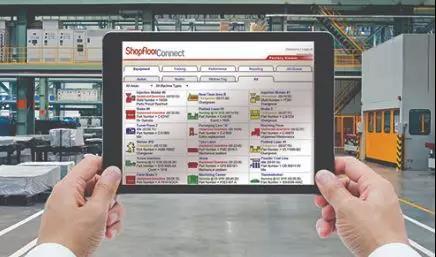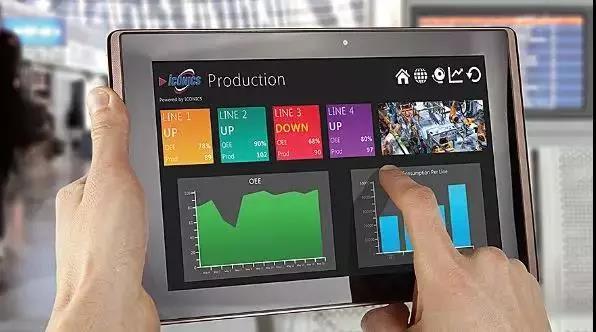The difficulty of MES implementation (Part 1): Selection
Let experienced consultants tell you how to choose a MES. This article is a must-read for MES selection and implementation! (Forward)
Since the concept of intelligent manufacturing was put forward, Manufacturing Execution System (MES) has set off a new wave of enthusiasm in China. Driven by technological development, policy guidance, and their own needs, numerous enterprises have launched MES projects. This has also driven the rapid development of MES software development companies. Overnight, MES software development companies have sprung up everywhere, and MES products have emerged in endlessly, featuring intelligence, agility, informationization, digitalization, and more. The intensive hype and bombardment of various terms, concepts, and schemes have left enterprises that truly want to implement MES systems overwhelmed, feeling like they are "dazzled by the flowers".

However, MES is not something that can be accomplished overnight. It requires long-term industry experience and accumulation from the supplier, as well as sufficient preparation from the user enterprise itself. I have been engaged in MES consulting and implementation services since early 2003, having held various roles including development, project implementation, consulting, project management, project director, and sales. I have implemented advanced MES product systems from both domestic and international vendors such as Wonderware, Miracom, and MPDV, and have also developed the intraFACTORY MES product with independent intellectual property rights. I have worked with various industries, including electronics assembly, auto parts, machining, semiconductor packaging and testing, medical devices, and photovoltaics.
It can be said that I have interacted with both domestic and international leading MES vendors and major industry clients. After experiencing numerous successful and failed MES projects, I deeply feel that client enterprises currently face various confusions during MES selection and implementation. Therefore, this series of articles was created, hoping to help readers understand MES systems, select MES systems that truly suit their needs, control MES implementation risks, and ensure smooth online operation.
The difficulty of MES implementation lies first in selection. Today, there are numerous MES products of varying quality, each with its own strengths and weaknesses. How to select the best and utilize its advantages is the most important concern for user enterprises. Part 1 of this series will address this issue from my experience as an MES consultant and salesperson, explaining the various aspects to consider during the selection process and helping readers take the first step in MES implementation.
The difficulty of MES implementation lies secondly in implementation. MES implementation involves multiple departments such as production, process, planning, quality, equipment, and warehouse, with complex relationships and diverse departmental needs that are difficult to reconcile. Part 2 of this series will explain the difficulties and key points in the implementation process from my experience in project management and implementation, ensuring the smooth implementation of MES projects.
The difficulty of MES implementation also lies in risk control. MES project implementation has a wide scope, long cycle, and significant resistance. Identifying and addressing potential risks that may affect project progress is a key factor in the success or failure of MES implementation. Part 3 of this series will explain MES implementation risk control and countermeasures from my experience in project supervision.
The difficulty of MES implementation finally lies in product functionality. All selection, secondary development, and implementation ultimately revolve around product functionality. After going online, users also interact with various functional modules of the product. Part 4 of this series will explain the key points of MES product functionality implementation based on my experience in multiple industries.
This article is Part 1 of this series , mainly explaining the various aspects to consider during MES selection, as well as my personal experience.
MES Selection Overview
After years of research and application, we now have a clear understanding of the standard model, application architecture, functional modules, and service interfaces of MES systems. There are also international standards such as ISA-95 to standardize the development of MES products. It can be said that the key technologies and functional modules of MES systems are basically mature. However, why do some enterprises succeed in implementing MES while others fail? According to incomplete statistics, 67% of small and medium-sized manufacturing enterprises fail in MES projects due to improper selection. Improper selection inadvertently sets oneself on a difficult path, leading to setbacks in MES implementation and ultimately failure.

Key Points of MES Selection
2.1. Establish a good MES selection team
① High-level participation and sufficient attention
Before deciding to implement an MES system and starting the MES selection process, it is necessary to open up management channels, ideally from top to bottom. The MES selection team should be led by the enterprise's manufacturing director, with the production vice president/IT manager serving as deputy team leader. Why is this? I once received an MES project requirement from Company C and was invited to participate in their MES project bidding. After visiting, I found that Company C's MES selection work was led by the CIM department under the information center. The CIM department reported to the vice president of the information center, who then reported to the manufacturing director. Communication was extremely inefficient, key requirements could not be decided, and the work was repetitive. When the ideas of the top management changed, the MES requirements and implementation scope changed accordingly, delaying the selection process for more than half a year. Eventually, with the adjustment of the vice president of the information center's work, the project came to an end. Therefore, MES selection must have the support of the manufacturing director. With top-level attention, the bottom-up promotion will be faster and more effective.
② Relevant personnel from various business units (planning, warehouse, production, process, quality, equipment, etc.) should track the process throughout.
In addition to the leadership mentioned above, the MES selection team should also include key users, such as heads of production, planning, process, quality, and equipment departments. Why is it necessary for members from different departments to participate? Because after MES implementation, it is ultimately the users who will use it, so user opinions are an important basis for MES selection. User opinions are reflected by members from their departments in the MES selection team. This member should preferably be a middle-level leader or technical backbone in the department, who understands the production situation, can communicate with department managers and frontline employees, and grasp frontline needs; on the other hand, it also ensures participation time and promotes speed. The entire selection process requires significant investment and support from business departments. It cannot be done by just one or two departments.
③ Seek support from senior industry consultants
The MES selection team should ideally include senior industry consultants. If not, consider borrowing or temporarily hiring them. Consultants should have extensive work experience, understand the industry's characteristics, and be familiar with the MES implementation process and key points. Consultants can provide significant assistance in several areas: ① Popularize MES knowledge to the selection team and establish a correct understanding of MES; ② Streamline and solidify business processes and straighten out relationships between various business-related departments; ③ Develop MES plans; ④ Organize and refine MES requirements; ⑤ Evaluate suppliers and products, and provide evaluations of the project manager and key project team members; ⑥ Evaluate the overall project execution and prevent risks. The role of the consultant is crucial; a good consultant acts as a booster and multiplier for MES selection and implementation.

2.2. Strengthen internal capabilities and clarify requirements
Specifically, this means that enterprises should lay a solid foundation for implementing MES and clarify their needs.
① Internal capability 1: Streamline business processes and build lean manufacturing processes
MES is the accumulation of industry and manufacturing processes. If a manufacturing enterprise does not have a standardized and lean manufacturing process, it will be impossible to implement MES. For the client, not every manufacturing enterprise has the ability to implement MES. If the enterprise does not have standardized and lean manufacturing processes, it is impossible to implement MES. The biggest taboo in MES selection is to blindly rush into it without streamlining, optimizing, or making the manufacturing process lean.
I have seen client enterprises with well-streamlined and optimized business processes, where workshop control is standardized, processes are clearly defined, production strictly follows process documents, and all processes are recorded with circulation cards. Communication with such enterprises is very smooth, and even if the other party doesn't understand MES very well, they can still get to the point. I have also seen enterprises with poorly streamlined processes, where material receiving and issuing are unclear, material deduction is arbitrarily filled in, rework processes randomly skip stations, and production data is recorded casually. For enterprises with unsolidified processes and incomplete basic data, MES implementation is prone to failure.
② Internal capability 2: Improve understanding and comprehension of the role of MES
I have visited many enterprises, and when we talked, their understanding of MES was limited to data collection and dashboard reports. I want to say that such enterprises are still far from implementing an MES system. If they are unclear about what MES is, what it does, and what goals it can achieve, how can they do a good MES project? I once encountered a situation where the client in a project had an unclear understanding of MES, believing that MES should be comprehensive and include all the requirements of the warehouse management system, such as warehousing, inventory checks, etc., which forced me to spend some time explaining MES to the client before the survey, allowing the project to continue. Therefore, enterprises must have a clear and unambiguous understanding of MES. After clarifying what MES can do, start the MES project.
③ Internal capability 3: Clarify requirements and know what you want
The organization of requirements depends on the specific situation. There are generally two methods: one is business department-led and IT department-assisted. In this case, each business department organizes its own requirements, and then discusses and determines them at the MES selection team working meeting; the other is IT department-led and business department-assisted. In this case, the IT department issues a unified MES requirement survey questionnaire, which is filled out by various user departments and returned to the IT department, which then summarizes and organizes it before submitting it to the MES selection team working meeting for discussion and determination. I suggest that requirements be organized by the business department, and that requirements should be proactively proposed by the business department according to their own needs and supported by the manufacturing director. In this way, the requirements obtained will be more realistic and clearer.
Some enterprises implement MES with a learning mindset, turning negotiations with suppliers into MES classrooms. Some enterprises simply think about implementing MES and then hastily call suppliers, but during communication, they cannot articulate pain points or provide business data, leaving suppliers unable to get started and leading to perfunctory results. Some enterprises do not conduct thorough requirement surveys, resulting in repeated and frequent changes, making it difficult for suppliers to cope. Some enterprises lack firm ideas, adding features today because they see a good product from one supplier, and adding more features tomorrow because they see another supplier with comprehensive functions, making the selection process protracted and unable to reach a decision. These are all manifestations of insufficient internal cultivation. Only by cultivating "internal capability 1" can more suitable requirements be organized, and enterprises can better understand what they want.

2.3. Develop a reasonable MES implementation plan
In short, it's about figuring out what you can have.
Most enterprises have different levels of workshop management, employee skills, and objective problems, making it impossible to implement MES in one step. Therefore, the MES selection team needs to have a clear understanding, unify their thinking, clarify the purpose and goals of MES implementation, and develop a reasonable MES implementation plan. If there are difficulties in developing the plan, a consultant or an early consulting project can help. Generally, MES phased planning involves overall planning and phased implementation. Based on the enterprise's own IT team size, technical capabilities, software and hardware facilities, workshop infrastructure, and project budget, it is decided whether to implement by functional module or by region.
After cultivating "internal capabilities" and combining your own implementation plan, you can clearly know what functions you can have now. Then, investigating MES products and suppliers will become a natural process.
2.4. Understand MES suppliers and products
Although there are many MES products and suppliers. However, MES is ultimately industrial software, and it requires long-term accumulation to obtain a good product. So, how can you understand your supplier and choose the most suitable MES system? I will introduce the "four-look" method.
① Look at the industry
MES products are very sensitive to the industry. For example, even in the semiconductor industry, 8-inch fabs and 12-inch fabs are different, and the choice of MES suppliers is also different. For the semiconductor industry, Apply Materials and IBM's products are suitable for 12-inch fabs, while Miracom's products are more suitable for 8-inch fabs. From an industry perspective, Apply Materials and Miracom's products are suitable for the semiconductor industry, Honeywell and Aspentech's products are suitable for the process industry, and Siemens' products are suitable for machinery, auto parts, and equipment manufacturing industries. Therefore, enterprises should choose products from MES manufacturers who are most proficient in their industry based on their own needs.
② Look at the product
Based on the characteristics of MES products, MES products can be divided into two categories: platform-based and product-based. The choice between a platform-type or product-type MES depends on the manufacturing enterprise's IT team. If the IT development and maintenance personnel are few, a product-type MES with rapid iteration and deployment can be selected, featuring modular design and add-on functions; however, if there are many IT development and maintenance personnel capable of undertaking secondary MES development tasks, a platform-type product is needed for future expansion. For example, large group enterprises with multiple factories can opt for a platform-type MES product. After secondary development, it can be applied across multiple factories, yielding better results than a product-type MES product. Therefore, product selection should consider not only the product's characteristics but also the enterprise's characteristics.
Product evaluation should also focus on the MES's secondary development capabilities. Secondary development is inevitable during MES implementation. However, product-type MES focuses on the industry and the actual product, with refined functions and less secondary development; while platform-type MES emphasizes process standardization, requiring more secondary development but closer to actual needs. MES products with complete secondary development documentation and well-designed development interfaces/APIs save time and effort in secondary development, reducing MES implementation costs and risks. When selecting, also check if the supplier has secondary development capabilities for the MES product. For example, I participated in the MES selection process for a company in Zhejiang. The chosen MES product was from a well-known international brand with many successful projects in China. However, the Chinese branch had very weak development capabilities, and some secondary development requests had to be sent back to the overseas headquarters. Unfortunately, this Zhejiang company had many secondary development needs. Due to these conflicts, the project implementation was ultimately mediocre.
③ Consider POC
POC, or Proof of Concept is a common validation test in MES selection, used to verify the product offered by the MES vendor. Based on the basic data provided by the user enterprise, the POC runs real data on the selected server to demonstrate the user enterprise's needs, verifying the MES system's business carrying capacity and functional coverage.
POC is crucial in MES selection. Since some enterprises have complex business processes, a single functional demonstration cannot cover real-world business needs. In such cases, a small-scale experimental subject needs to be defined in advance (this could be one or two typical products or typical process routes, but the complexity of the business logic should be representative and reflect pain points in the production process). Through data import and operational demonstrations of these one or two typical products, from the practice of real business scenarios to the realization of enterprise informatization construction, it verifies which functions the vendor's MES product can achieve and whether it meets its own plans and needs, thus making an objective and more accurate judgment. Moreover, POC also reveals the supplier's ability to respond to needs, rapid deployment, and secondary development capabilities, allowing for further supplier evaluation.
④ Consider Personnel
Personnel include the supplier's MES implementation team, management team, and consulting team. Carefully assess the implementation team's experience and background, the management team's communication and risk control capabilities, and the consulting team's qualifications. Companies that truly do MES are generally not large; the key is the core personnel. Selecting solely based on supplier size is one-sided; supplier size is important, but it shouldn't be the deciding factor. Furthermore, the experience of the supplier's consultant is crucial. The supplier should ideally choose experienced consultants. This way, the consultant can guide the user throughout the project phases. For a successful project, the user must trust the consultant and the supplier.

Final Thoughts
MES selection is a complex systems engineering project. Planning, requirement specification, supplier, product, team, and risk assessment, and POC implementation all have many points to consider. Knowing the difficulty makes the action easier. My most profound experience was with the ZC Group. During the first MES implementation, several key points mentioned in this article were overlooked, resulting in selection failure. Later, I was invited to provide consulting services, systematically learning MES knowledge and clarifying business processes and pain points. After a year of careful preparation, the MES project was relaunched and went live in 9 months, running smoothly for over 3 years.
Selection has risks. I have recorded my years of experience in MES consulting and implementation, hoping to help enterprises control selection risks and enable all enterprises aspiring to implement MES systems to select suitable MES products!
Related News
Tel:+86-519-88856666
Fax:+86-519-85158666
Email:czhongda@czhongda.com.cn
Company Address: No. 220, Taishan Road, High-tech Zone, Changzhou, Jiangsu Province, China

Tiktok

Official Account
Copyright © Changzhou Hongda Intelligence Technology Co., Ltd.


